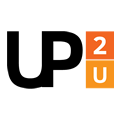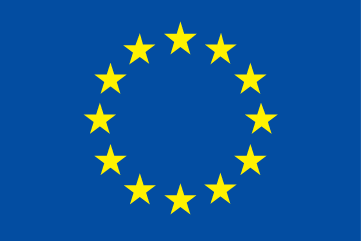More than a year ago, the European project Up2U began, designed for high school students and their teachers with the aim of preparing them for the use of technologies they will have to master at the university. At the end of the first training pilot for teachers, GARR interviewed some of the participants to learn about their experience. At the Sapienza University in Rome, we have met pedagogic minds of the project, professors Donatella Cesareni and Nadia Sansone.
How can Up2U prepare high school students for university?
The Up2U project was born to support the transition of students from high school to university. To achieve this goal, project partners developed a technology platform to promote experimentation of a range of teaching modalities in which students have to perform concrete activities, create products, work together while learning curricular contents and crucial key skills.
During the first year of the project, after a careful analysis of the literature and government policies, incorporating the point of view of high school teachers, these key skills have been identified as collaborative work, creativity, critical thinking, motivation and resilience. To promote their development, Up2U focuses on the use of a technological ecosystem composed of the Moodle platform which has been enhanced with a series of tools and plugins that make it more interactive and creative, such as discussion forums, survey forms and tasks or embedded resources.
| THE TECHNOLOGICAL MEDIATION MAKES SENSE ONLY IF IT IS DESIGNED AND GUIDED BY TEACHERS THAT HAVE EXPERIENCED IT IN THE FIRST PLACE |
This ecosystem should be conceived as a tool to support the student-centred learning principles where technological mediation only makes sense if it is designed and guided by teachers who have personally experienced the principles and techniques they will then to apply to their students. Only in this way is it possible to exploit the potential of these technological tools and promote crucial skills such as problem-solving, creative thinking, metareflective skills, motivation.
How did you set up a course for teachers with different teaching styles and levels of digital literacy?
The course encouraged flexible and personalised participation. Thus, teachers could interact according to their different skills and knowledge, modulating their path and being gradually familiarised with this new teaching method. This was made possible thanks to the learning path with phases of increasing complexity; constant technical support and tools calibrated on the basis of the skills previously measured; diversified resources, in a way that everyone could choose their own (from pedagogical principles to in-depth analysis of the concept of algorithm), depending on the interest and specific discipline taught; assignment of specific responsibilities (such as group coordinator); educational design workshop in which each participant could put what was learned, creating their own Up2U project to be used in class, starting from autumn 2018. Thus each teacher was able to shape their learning path based on their interests and also their familiarity with a certain type of teaching method and with technologies.
What will be the next steps?
We are analysing the data collected so far, in order to verify the aspects that can be improved and consolidate those that have worked at their best. We are also active in the creation of new multimedia paths, which will allow us to offer an even richer experience to the teachers of the new phase of training that will be launched in the fall. This first phase was, in fact, a sort of exploratory pilot aimed at developing the method, both in logistics and in teaching terms, thanks to the observations made during the course and the feedback provided by the teachers.
But this fall will also be dedicated to on-the-job training, which means the side-by-side coaching of the teachers that have already been trained in order to accompany them in the implementation phase of the didactic projects that they have developed during the pilot. In doing so, they will be followed through both methodological and technological support, keeping in mind that the greatest challenge for them will be to move from theory to practice, applying to their classes what they themselves have learned and personally experienced.
From the school perspective
How did this first pilot go? We asked the representative of the Ceccano High School in Frosinone.
Professor Cipriani, how did you approach the Up2U project?
My school has been part of the GARR network for years and in the fall of 2016 we were invited to take part in the Up2U project. I immediately joined with enthusiasm because I was and still am convinced of the need to establish a bridge between the skills acquired by students when leaving high school and those required by the universities, this also in order to reduce university drop-out rates after the first year of studies. The biggest challenge is understanding which tools to provide, such as the required skills, which are often informal and can hardly be evaluated by secondary schools.
What was your experience and what are the benefits for a school?
Working on the Moodle platform was very useful. Personally, I had attended other specific courses before, but I was not able to get right into the logic of this extraordinary collaboration tool. In particular, working in a shared environment, in a team was useful and innovative. Still too often in high school, teachers find it difficult to work in groups on common goals and methods. Before I preferred to work with Google apps, I found them easier and more intuitive. This course allowed me to get to know new tools and I appreciated the ease of the didactic approach to learning by doing.
In addition, Up2U helped me to give a structure to the use of these innovative tools in order to be able to keep students attention during the lesson. In this way students get directly involved, they are divided into groups and they are assigned a role (role-taking), they are assigned a certain task and timing and this prepares them to manage their resources responsibly and to work in a group, understanding that everyone is at the same time a limit and a resource for the others. Up2U gives a structure to the use of innovative tools, providing a template for the preparation of lessons that helps focusing on objectives, expected results and related activities.
How would you define the level of preparation of the participants? And the interaction within the group?
The group was very heterogeneous with regards to digital skills: some very experienced and others with basic skills. These differences depend on their teaching practices as well as on the access to the network and the availability of devices in their school. It was not easy to accept the challenge, at first, as we all are not digital natives. It requires a certain amount of curiosity, desire to experiment something new and the willingness to get in the game.
Also, we did not know each other: after the first technical meeting, held by GARR team, we were divided into groups and we worked online on a project, collaborating on the Up2U platform. This allowed us to share our knowledge, a kind of two-way contamination. For example, when we received the task to prepare a pedagogical scenario, I used a subject that I was already using in class (the protests of 1968). The best part was that, without knowing each other, a team was created starting from an idea and we worked together online without filters linked to our respective roles. It was not easy at first, because everyone started on different levels: for example, we used the blog as a way to write to communicate instead of using the appropriate messaging system. However, thanks to the coaching of our tutors, we made it.
| BEFORE THE UP2U TRAINING IS USED TECHNOLOGICAL INSTRUMENTS IN CLASS IN A NON-STRUCTURED WAY. |
From a teaching point of view, how do you plan to use what you have learned?
Personally, I have already started by applying in class what I was learning during the course. For example, doing microlessons with voiceovers or using Padlet, which was a real success. Thanks to it, my students have produced beautiful shared presentations, like concept maps but with the possibility of integrating images, movies, GIF and audio. In order to create these presentations, the students had to select information from trusted sites, and this was a very important exercise. In addition, the Padlet was enriched by the work of others, and this was another learning opportunity.
In your opinion, does the presence of a national education network (like GARR) facilitate the adoption of new teaching methods, such as those of Up2U?
Certainly, I have been working for 5 years in the Liceo di Ceccano where thanks to GARR network the traditional frontal lessons are very marginal. For example, BYOD is a common and daily practice. Each student in the classroom uses their device, smartphone, tablet or laptop for dynamic and participated lessons. The Up2U platform will be an opportunity of great value for us. In order to exploit this kind of resources, we need good connectivity, and thanks to the GARR network, we have been able to do it successfully for years.
And now that the training pilot has ended, what will happen?
The first course laid the foundations for future work. Nothing is really finished, but we hope it will be the beginning of a more in-depth teamwork. During the pilot, an excellent collaborative atmosphere was established, which has stimulated the interest and curiosity in most of us. Now we are available to the university (Università di Roma La Sapienza) and in the fall we will discover the next steps. For now, I think this project is the opening of a dialogue between universities and schools, and this can only be positive.


 The innovation action leading to these results has received funding from the European Union's Horizon 2020 research and innovation programme under Grant Agreement No. 732049 - Up2U
The innovation action leading to these results has received funding from the European Union's Horizon 2020 research and innovation programme under Grant Agreement No. 732049 - Up2U 